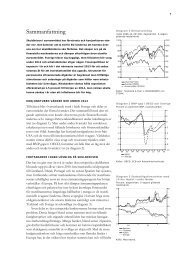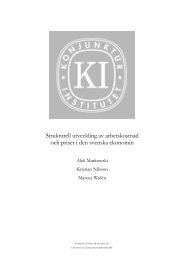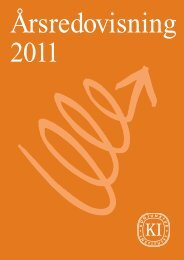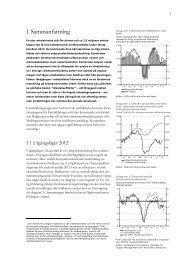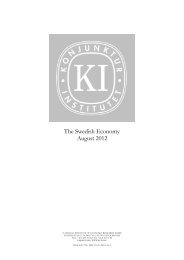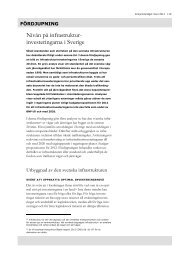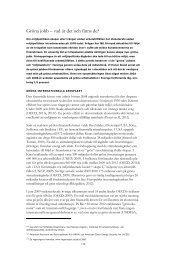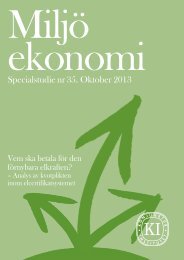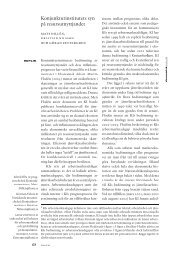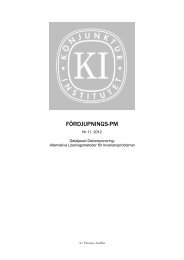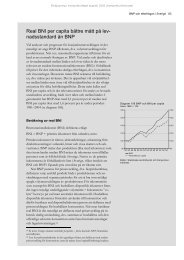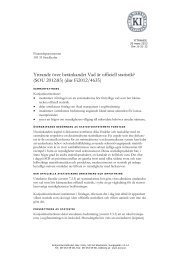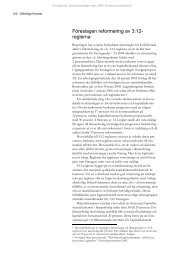Central Bank Forecasts of Policy Interest Rates - Konjunkturinstitutet
Central Bank Forecasts of Policy Interest Rates - Konjunkturinstitutet
Central Bank Forecasts of Policy Interest Rates - Konjunkturinstitutet
Create successful ePaper yourself
Turn your PDF publications into a flip-book with our unique Google optimized e-Paper software.
13wheree are the forecast errors <strong>of</strong> the central bank andCBt h te are the forecast errors <strong>of</strong> thealtt htalternative method we are comparing it to, that is, either market pricing or the naïve forecast; tisan error term. The null hypothesis is that the forecast accuracy <strong>of</strong> the central bank is equal to that<strong>of</strong> the alternative and is tested by comparing a transformation <strong>of</strong> the t-statistic on ˆ to the relevantcritical value from the t-distribution. Results are shown in Table 2. The null hypothesis cannotbe rejected in a single case and we hence conclude that there is no support for a difference in forecastaccuracy.Table 2. Results from modified Diebold-Mariano test.NorwaySweden1 quarterMarket pricing 0.90 -1.58Naive -1.39 -1.441 yearMarket pricing 1.29 1.72 cNaive -1.03 -0.832 yearsMarket pricing -0.13 0.64Naive -0.33 0.08Note: Entries in the table are the test statistic from the modified Diebold and Mariano test <strong>of</strong> Harvey et al.(1997). a , b and c indicate significance at the one, five and ten percent level respectively. Regressions have 22,19 and 16 observations at the one-quarter, one-year and two-year horizons in Norway. Regressions have 31,26 and 20 observations at the one-quarter, one-year and two-year horizons in Sweden.The results for Sweden show that the Riksbank has the lowest RMSE at the one-quarter horizon,albeit only marginally less than that <strong>of</strong> market-inferred expectations. At the one- and two-year horizons,the Riksbank’s forecasting performance is slightly poorer than that <strong>of</strong> market-inferred expectations;at the one-year horizon, the modified Diebold-Mariano test suggests that this difference isstatistically significant at the ten percent level. At the two-year horizon, the Riksbank also performsworse than a naïve forecast but the differences between the different measures at this horizon arequantitatively small and in no case statistically significant.Overall, there is little support for a qualitative difference between central banks’ forecasts and market-impliedexpectations <strong>of</strong> the policy rate. The forecasts follow similar patterns over time and it isevident from Figures A2 to A7 that neither the central banks nor markets foresaw the abrupt cut inpolicy rates in the immediate wake <strong>of</strong> the financial crisis.



